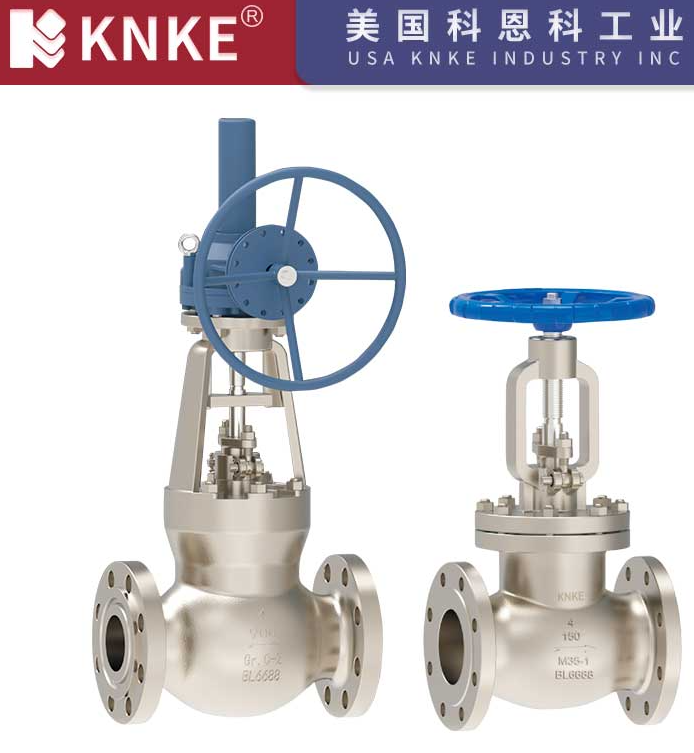The Role of the Globe Valve: The Precise Gatekeeper of Fluid Control
In industrial pipeline systems, various valves play crucial roles, and among them, the globe valve stands out as the “gatekeeper” of fluid control due to its unique structure and excellent regulating performance. Its primary function is to cut off or regulate media flow, ensuring the safety and efficiency of production processes.
Working Principle and Structural Characteristics of Globe Valves

Globe valves achieve precise fluid control thanks to their unique design. The disc moves along the centerline of the valve seat, controlling the fluid’s flow area by changing the distance between the disc and the seat. When the stem moves the disc downward, the disc gradually approaches the seat, reducing the flow area until it’s completely closed. Conversely, when the disc moves upward, the flow area increases until it’s fully open.
Unlike other valves like gate valves, the internal flow path of a globe valve is typically “S”-shaped or “Z”-shaped. This causes the fluid to change direction as it passes through, leading to some pressure loss. However, it is precisely this structural characteristic that gives the globe valve its excellent regulating performance.
Core Functions of Globe Valves
The core functions of globe valves are mainly reflected in the following aspects:
- Flow Regulation and Throttling: This is the most significant advantage of globe valves. By rotating the handwheel, the opening degree of the disc can be precisely controlled, allowing for stepless regulation of fluid flow. This is crucial for processes requiring precise control of flow rate, pressure, or temperature, such as in chemical, power, and metallurgy industries, where they are often used to regulate the flow of cooling water, steam, fuel gas, and other media.
- Complete Shut-off of Media: Globe valves can also achieve complete shut-off of fluids. When the disc and seat are tightly sealed, they effectively prevent media from passing through, ensuring pipeline system isolation and safety. Although they may not have the minimal flow resistance of gate valves for complete shut-off, their excellent sealing performance makes them widely used in applications requiring reliable shut-off.
- High-Pressure and High-Temperature Applications: Globe valves typically feature more robust body designs and more wear-resistant seat materials, allowing them to withstand higher pressures and temperatures. This makes them perform excellently in harsh conditions such as steam, high-temperature water, and high-pressure gas.
- Corrosion-Resistant Applications: For different corrosive media, globe valves can be manufactured from corrosion-resistant materials such as stainless steel or alloy steel to ensure long-term stable operation in acidic, alkaline, saline, and other corrosive environments.
Application Scenarios of Globe Valves
Due to their superior performance, globe valves are widely used across various industries:
- Oil and Gas Industry: Used for controlling the transportation and distribution of crude oil, natural gas, refined oil products, and other media.
- Chemical Industry: Used in various chemical reactors, pipelines, and storage tanks for precise control of chemical flow and temperature.
- Power Industry: In thermal power plants, they are used to control critical media such as steam and boiler feedwater.
- Water Treatment and Municipal Engineering: Used for flow regulation and shut-off in water supply and wastewater treatment systems.
- Pharmaceutical and Food Industry: Used to control clean fluids on production lines with strict hygiene requirements.
Although globe valves incur relatively higher pressure loss when fully open and their structure may be slightly more complex than other valves, their excellent flow regulation capabilities, reliable shut-off performance, and stable operation in high-pressure and high-temperature environments make them indispensable components in industrial pipeline systems. They act like precise and reliable “gatekeepers,” silently safeguarding the safe and efficient operation of fluid media in pipelines.
